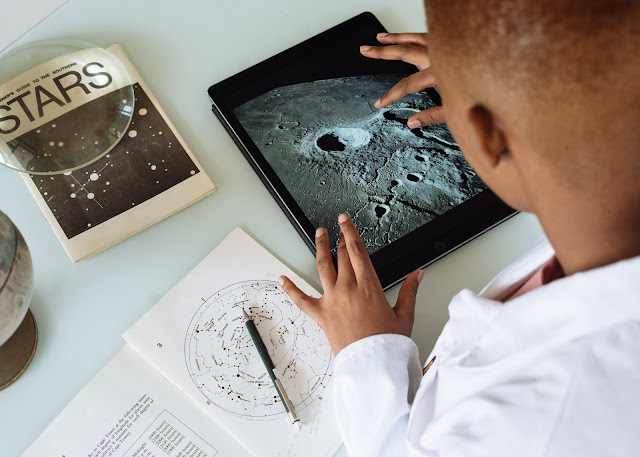How AI is testing the boundaries of human intelligence
In an extraordinarily day rapid-paced technological landscape, the intersection of synthetic intelligence (AI) and human intelligence is constantly being explored, pushing the boundaries of what we idea feasible. As a professional technologist deeply entrenched in the realm of AI, it is apparent that the upgrades on this issue are revolutionizing how we recognize and interact with intelligence.
Introduction to AI and Human Intelligence
Artificial intelligence, regularly abbreviated as AI, refers back to the simulation of human intelligence techniques through machines, mainly computer structures. From speech recognition to preference-making, AI contains a wide range of functionalities aimed in the course of mimicking human cognitive abilities.
Human intelligence, however, encompasses the complicated interplay of cognitive procedures, which incorporates reasoning, reading, problem-solving, and emotional information. It's the culmination of evolutionary strategies and societal influences that form our records of the region.
The Evolution of AI
The journey of AI lines all yet again to the mid-twentieth century at the same time as the concept first emerged. Since then, AI has prolonged the past through massive evolution, fueled through the use of the use of breakthroughs in laptop generation, neuroscience, and facts analytics. Milestones together with the improvement of neural networks and deep studying algorithms have propelled AI into new geographical areas of opportunity.
AI's Impact on Human Intelligence
AI isn't always just a tool; it is a catalyst for augmenting human intelligence. By leveraging AI generation, humans can beautify their cognitive abilities and tap into previously untapped potentials. Whether it's miles analyzing sizeable datasets or producing revolutionary solutions, AI serves as a stress multiplier for human intelligence.
Challenges Faced Through AI in Testing Human Intelligence
However, AI's journey inside the path of attempting out the bounds of human intelligence isn't always without hurdles. Understanding context, nuances, and emotions remains an assignment for AI structures, highlighting the complexity of human cognition. While AI excels in fantastic obligations, it no matter the truth struggles to emulate the holistic nature of human intelligence.
Current Applications of AI in Testing Human Intelligence
Despite the demanding conditions, AI has already made massive inroads in attempting human intelligence. Cognitive assessment devices powered via AI algorithms offer insights into cognitive abilities, supporting customized analyzing trips and professional development.
Future Prospects of AI in Pushing the Boundaries of Human Intelligence
Looking in advance, the future of AI holds large promise in similarly pushing the boundaries of human intelligence. Advancements in herbal language processing and the combination of AI with immersive technology like virtual fact are poised to revolutionize how we engage with practical structures.
Ethical Considerations in AI Development
As AI continues to beautify, it's far more important to deal with ethical problems surrounding its improvement and deployment. Ensuring equity, transparency, and mitigating bias is paramount to building AI structures that increase human intelligence responsibly.
The Role of AI in designing the future of knowledge
One of the maximum promising applications of AI lies in schooling. Adaptive knowledge of systems powered with the aid of using manner of use of AI algorithms can tailor educational evaluations to person beginners, optimizing retention and engagement.
AI's Contribution to Scientific Discovery
Furthermore, AI's skills are revolutionizing medical discovery through accelerating study methods and unlocking insights from tremendous portions of statistics. From drug discovery to weather modeling, AI is using innovation within the direction of several domains.
The Intersection of AI and Human Creativity
AI is not certainly restricted to analytical responsibilities; it's also making strides in the realm of creativity. From producing artwork and tuning to taking part with humans in revolutionary tasks, AI is expanding the horizons of human creativity with splendid strategies.
The Potential Risks of AI Overstepping Human Intelligence
However, as AI becomes superior, there are concerns approximately it overstepping the bounds of human intelligence. Issues like lack of manipulation and unintended results underscore the want for responsible AI development and governance.
The Need for Continued Collaboration Between AI and Human Intelligence
Ultimately, destiny lies inside the symbiotic dating between AI and human intelligence. By harnessing the strengths of every, we will address complicated disturbing conditions and lose up new frontiers of information. Continued collaboration and interdisciplinary research can be key in information on the overall functionality of AI at the same time as maintaining the essence of human intelligence.
Conclusion
In this case, the wedding of AI and human intelligence represents a paradigm shift in how we recognize and harness intelligence. From improving cognitive talents to the usage of clinical discovery, AI is reshaping the very fabric of human life. As we navigate this transformative journey, it is crucial to method AI improvement with a warning, ensuring that it remains a device for empowerment in the vicinity of a hazard to human autonomy.
Related Posts
The Impact of Artificial Intelligence on Elections and Disinformation

.jpg)


Comments
Post a Comment